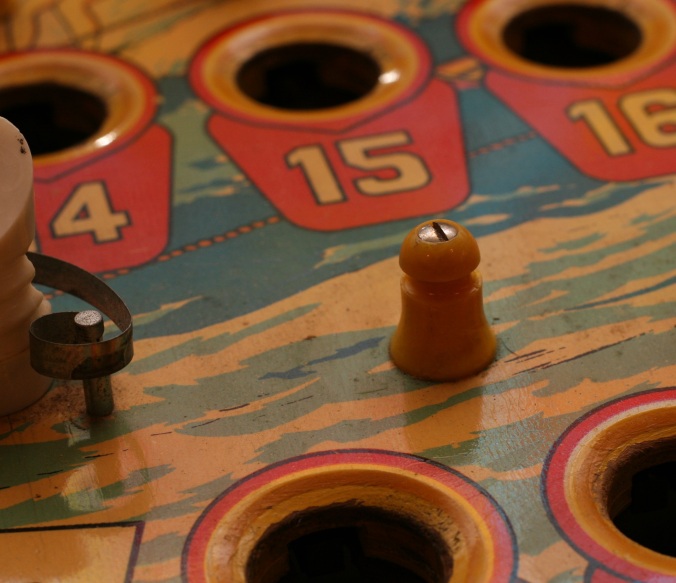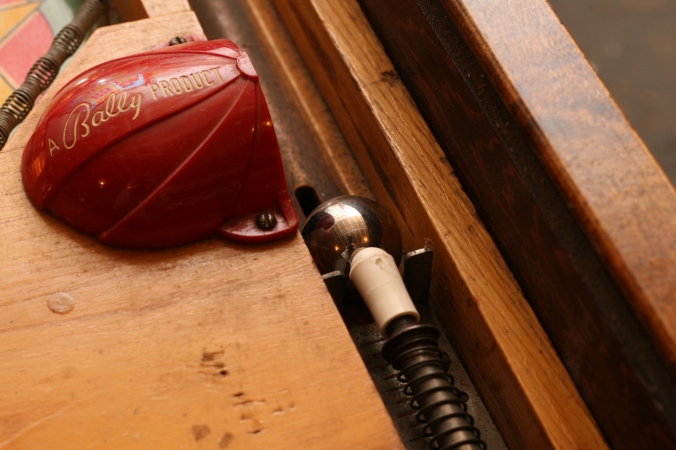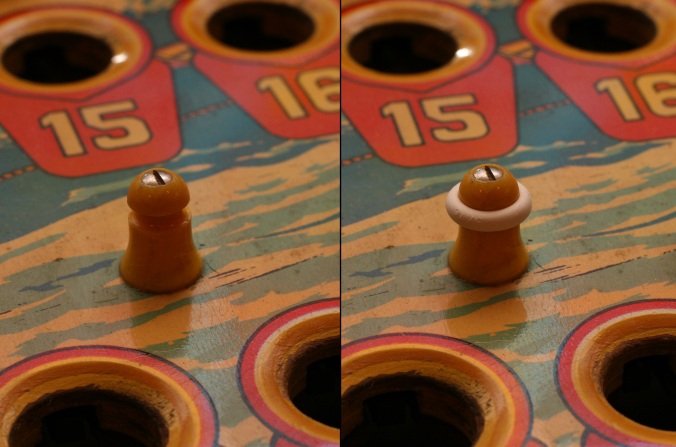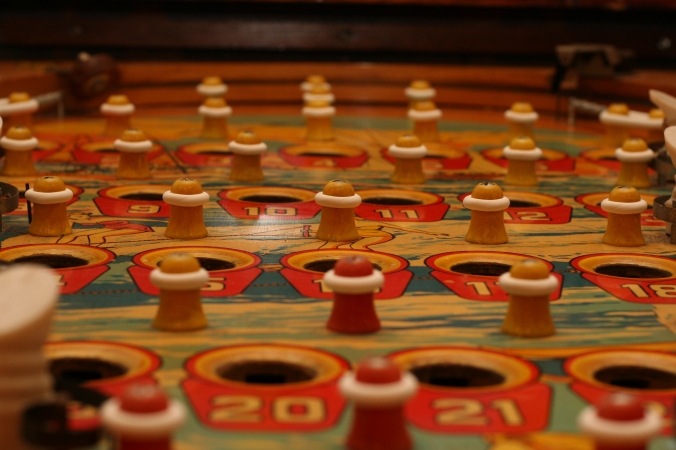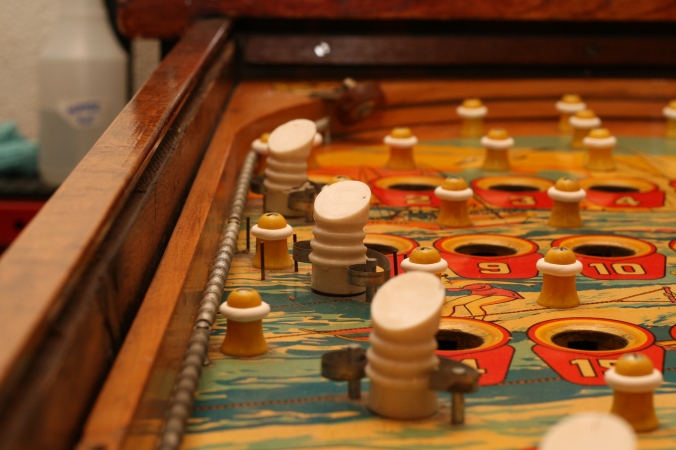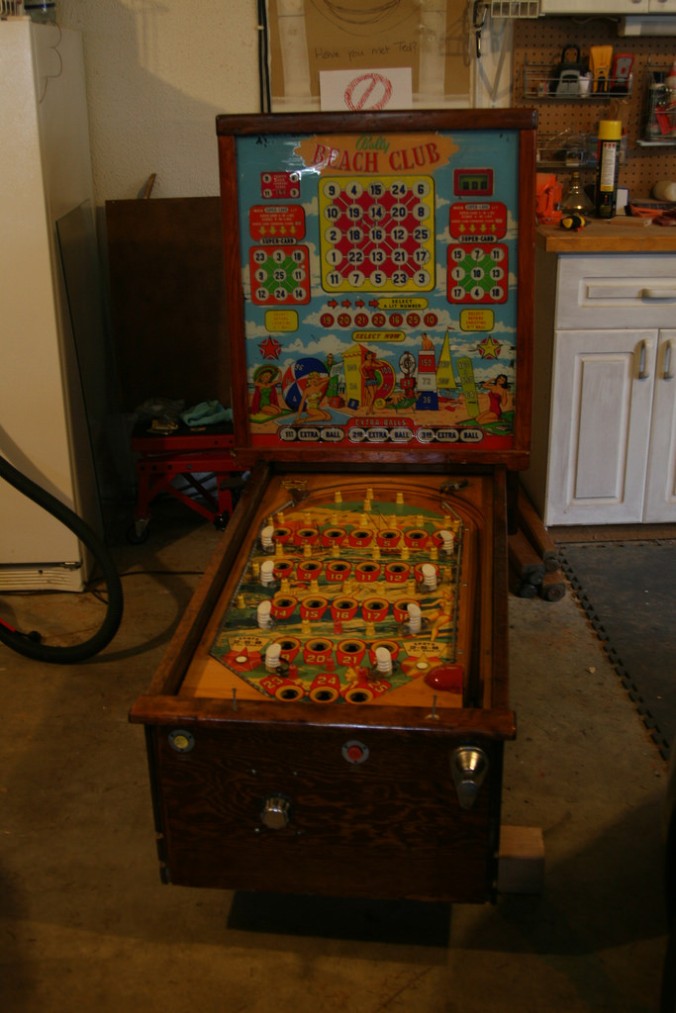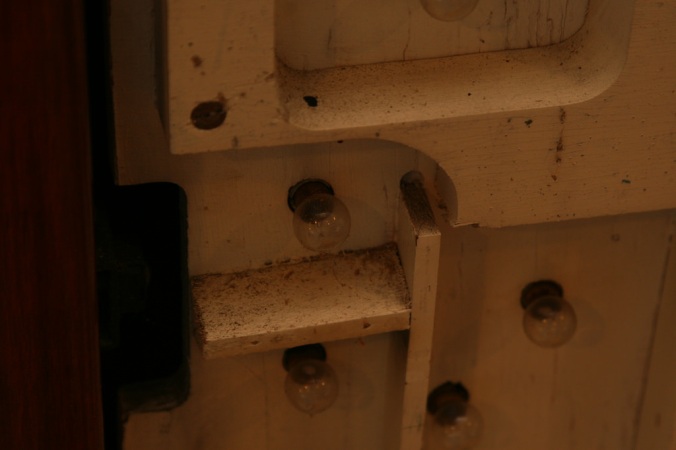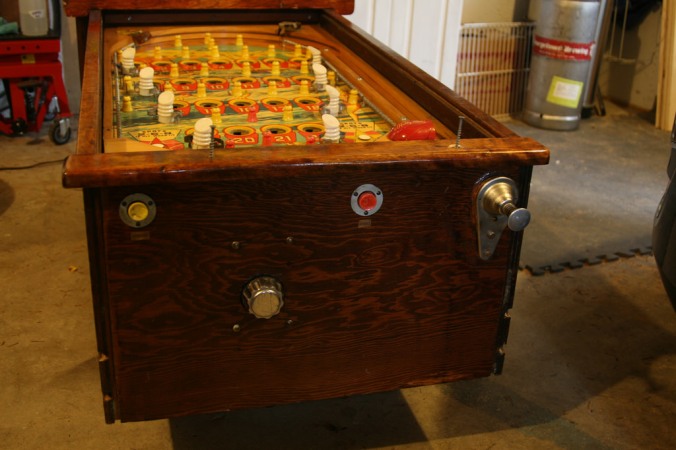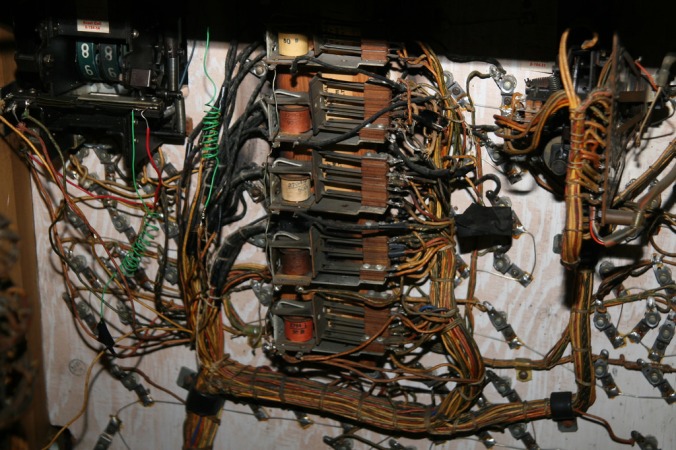Okay, so we didn’t use any real spit, but with a bit of spit shine and elbow grease, our Bally Beach Club is just starting to show the first hints of her original charm. Now, restoration isn’t as simple as just plugging her in and hoping for the best — there’s actually a lot that ought to be done before firing things up.
First things first, we gave the table a good once over with a damp rag to get the surface layer of grime off.
Okay, so maybe we didn’t do the most thorough job of cleaning things off. As you can see, we clearly need to do some additional cleaning with non abrasive cleaners. For this first round of cleaning, we weren’t focused on cosmetics — we really just needed to get the big chunks of grime off of the playfield before firing things up. Leaving grime on the playfield is a great way to scuff up the balls and cause additional damage to the artwork. It took several rags to get through the first coat of grime, but it made the playfield significantly smoother to the tough. We also took the opportunity to literally get rid of the cobwebs and give the whole table a good vacuuming, inside and out.
After getting through the preliminary cleaning we got down to replacing a few missing parts. As you might recall from our earlier post introducing this table, there are some serious parts missing from this table. But, of course we didn’t jump straight in to replace the missing coin door or anything major like that — we had to start with the bare basics.
For starters, this table was missing the most important part of a pinball table: the balls!
Now, as a bingo pinball table, the ball situation is a little different than what you’d expect to see on a more conventional table. Even though gameplay occurs one ball at a time, the machine is actually designed to take eight balls. Plus, the balls are just a tiny bit different in diameter than what you’d find on a modern table. Each ball on a bingo table is 1 1/8″ in diameter, instead of the more common 1 1/16″, but even with the odd sizing they’re still pretty easy to find at any major pinball supply website.
Installing the balls is a completely trivial task. All you do is plop them down on the playfield and they’ll roll into their natural resting place underneath the playfield. Nothing to it, really. Just make sure to put all eight in there or the right switches won’t be tripped to get a new game going later. The ball channel has a series of sensors underneath it that let’s the game know just how many balls are left to be played, and the circuits get mighty confused if it tries to restart and can’t “detect” that everything was returned to the ball trough.
Next up, we installed our rubbers. Part of the allure of a good pinball game is watching the ball bounce around. Given that the balls are steel, and most playfield parts are made out of plastic, we need a little something extra to get that nice bounce. On most parts of most tables, this is done through rubber rings.
Naturally, this poor pinball table’s rough life strikes again. For whatever reason, every single piece of rubber was missing from the playfield. Perhaps they were taken away by whoever absconded with the balls and coin door. Regardless, though, it’s a pretty simple fix. A quick online order is all it takes to get a fresh set of playfield rubbers, and some suppliers even sell bundled kits that include everything a particular model of pinball might need. Heck, even if we had the original rubbers on the table, it still would have been worth picking up a kit to replace them all. Over time, the rubbers lose their springiness and the table stops feeling as zippy as it should. It’s a cheap fix, an easy fix, and just not a worthwhile place to cut corners.
Basically, we did this:
And, then we did that again and again and again and…. well, you get the idea. This table uses dozens upon dozens of little rubber rings. It isn’t exactly hard work, just tedious and repetitive. After a few minutes, though, the whole playfield is a lot more complete:
Ah, yes, the sweet signs of progress…
Alright, so we put some balls in the table and we got some fresh rubbers onto the playfield. But that was about as far as things got before we could no longer resist the tempatation to actually plug ‘er in and see what worked. So, we grabbed our fire extinguisher and braced ourselves for disaster…
But I think that’s a good story to save for another day 🙂
